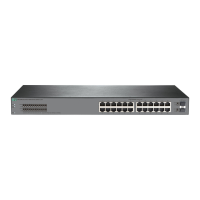114
<Device> system-view
[Device] ipv6 dns server 2::2
# Configure com as the DNS suffix.
[Device] dns domain com
Verifying the configuration
# Verify that the device can use the dynamic domain name resolution to resolve the domain name
host.com into the IP address 1::1.
[Device] ping ipv6 host
Ping6(56 data bytes) 3::1 --> 1::1, press CTRL_C to break
56 bytes from 1::1, icmp_seq=0 hlim=128 time=1.000 ms
56 bytes from 1::1, icmp_seq=1 hlim=128 time=0.000 ms
56 bytes from 1::1, icmp_seq=2 hlim=128 time=1.000 ms
56 bytes from 1::1, icmp_seq=3 hlim=128 time=1.000 ms
56 bytes from 1::1, icmp_seq=4 hlim=128 time=0.000 ms
--- Ping6 statistics for host ---
5 packet(s) transmitted, 5 packet(s) received, 0.0% packet loss
round-trip min/avg/max/std-dev = 0.000/0.600/1.000/0.490 ms
Example: Configuring DNS proxy
Network configuration
As shown in Figure 48, configure Device A as the DNS proxy to forward DNS packets between the
DNS client (Device B) and the DNS server at 4000::1.
Figure 48 Network diagram
Procedure
Before performing the following configuration, make sure that:
• Device A, the DNS server, and the host are reachable to each other.
• The IPv6 addresses of the interfaces are configured as shown in Figure 48.
1. Config
ure the DNS server:

